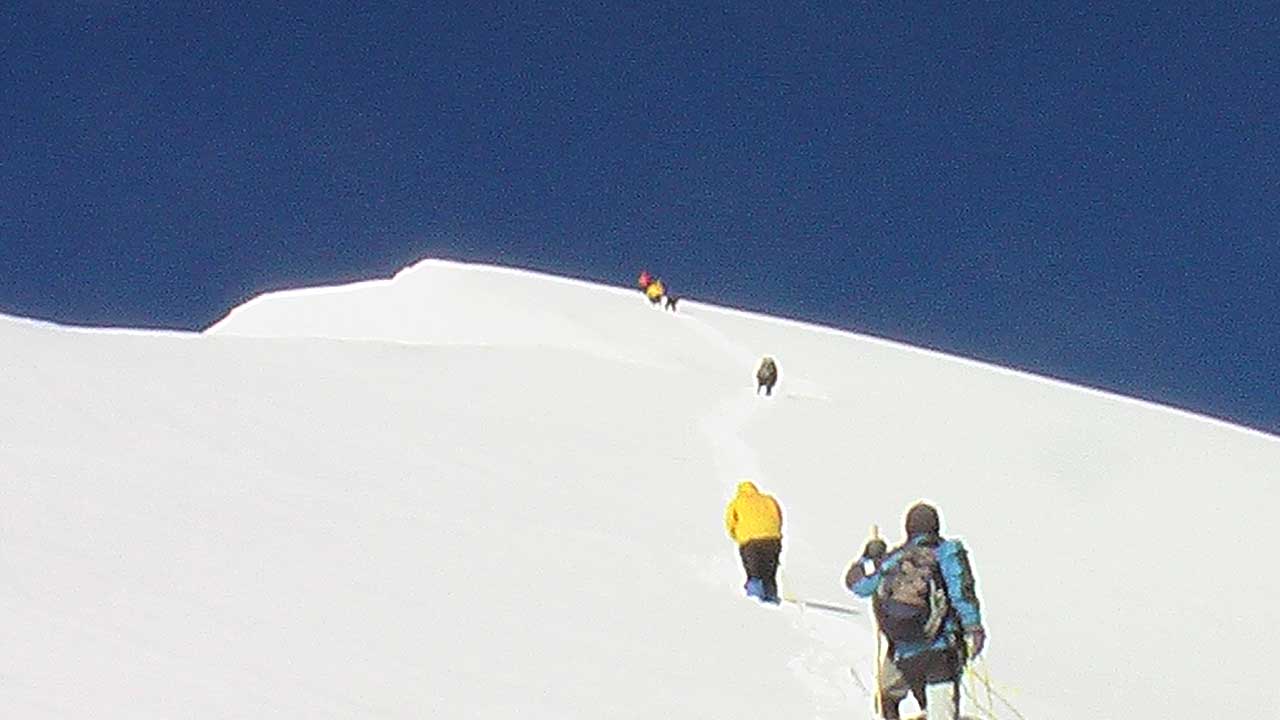Is Gravity Different at the Top of Everest? You’ll Never Believe It!
Blogs
Climbing & Science: Is Gravity Different at the Top of Everest?
Mountains teach you many lessons—not just about nature and endurance but also about the hidden forces of science that shape our world. One day, during a routine discussion with my team about the KN (kilonewton) breaking strength of our carabiners, I stumbled upon a scientific gem that caught me off guard. It started as a simple query: “Does the value of gravitational acceleration g vary at different altitudes?”
As climbers, we often fixate on forces, weights, and breaking points. Our carabiners, for example, are rated to withstand specific forces, typically expressed in kilonewtons (kN). The breaking strength of these tools depends on the forces they are subjected to—forces largely influenced by gravity. But what if the gravity acting on them changes with elevation? Is Gravity Different at the Top of Everest? This question spurred an unexpected journey into the fascinating world of gravitational variability.
The Gravitational Constant (g) and Altitude
The gravitational constant g, which on Earth is generally considered 9.8 m/s², isn’t a fixed number across all locations. This constant decreases slightly as you move away from the Earth’s core, which means the higher you climb, the lower the force of gravity acting on you. As mountaineers venturing into the heights of the Himalayas, we experience a subtle yet scientifically significant shift in gravitational pull.
So, why does this happen? According to the Inverse Square Law, gravitational force diminishes as the distance between two objects increases. Since gravity pulls everything towards the center of the Earth, the farther away you are (i.e., the higher you climb), the weaker the pull becomes. This led us to ponder: could this variability in gravitational pull impact the way we assess the forces acting on our climbing equipment at extreme altitudes?
Gravity’s Subtle Shift: Fact or Fiction? Is Gravity Different at the Top of Everest?
In high-altitude environments like the Himalayas, g decreases by a small fraction as we ascend. For example:
- At sea level, the value of g is approximately 9.80665 m/s².
- At the summit of Mount Everest, this value drops to around 9.773 m/s².

This difference may seem negligible, but for scientists, it’s an important factor that impacts everything from satellite trajectories to our understanding of Earth’s shape and mass distribution.
Further research led us to scientists who have long been exploring this phenomenon. One key discovery is that the Earth is not a perfect sphere; it bulges slightly at the equator and flattens at the poles. Because of this, gravity is stronger at the poles and weaker at the equator. The Himalayas, being closer to the equator than the poles, experience a slightly reduced gravitational pull compared to places at lower latitudes.
Scientific Validation in the Field
This idea wasn’t just theoretical; it had practical applications. Scientists have measured gravitational acceleration at different altitudes and latitudes to map the variability. Gravitational surveys have been conducted in the Himalayas to study the local variations in g. These studies help geologists and geophysicists understand the tectonic dynamics that give rise to mountain ranges.
For example, gravitational anomalies have been used to map the Earth’s crust beneath the Himalayas, shedding light on the ongoing collision between the Indian and Eurasian plates. Understanding these forces is critical not just for climbers but for scientists looking to better understand the processes that shape the Earth’s surface.

Implications for Climbers and High-Altitude Expeditions
From a climber’s perspective, understanding gravitational variability might seem like a small detail, but it’s a reminder of how science quietly influences every step we take. For instance, the reduced gravitational pull means that objects weigh slightly less at higher altitudes. While this doesn’t dramatically change how we operate, it does play a role in aerodynamics, physiology, and equipment safety—especially when you’re on the razor’s edge of survival at extreme heights.
When we discussed the impact of gravitational variability on the KN rating of carabiners, the team and I realized that while the change is marginal, it contributes to the greater context of understanding forces in high-altitude environments. The mountains are not just the playground for adventurers; they are living laboratories for scientists.
Looking Ahead: More Discoveries to Uncover
Our exploration into gravitational variability led us down a rabbit hole of other scientific discoveries influenced by mountain expeditions. From the study of hypoxia (oxygen deprivation at high altitudes) to the understanding of plate tectonics and the role of jet streams, the Himalayas have played a crucial role in advancing scientific knowledge across various fields.
These topics are just the beginning. Stay tuned for future blogs where we dive deeper into how mountains have shaped scientific theories and how those theories, in turn, shape our understanding of the world. From the barometric formula to the formation of the Himalayas themselves, science is a constant companion on every expedition.
Conclusion
The discovery that gravitational acceleration decreases as you climb higher, especially in places like the Himalayas, is a fascinating reminder of how deeply intertwined science is with adventure. Whether you’re a scientist studying the Earth’s forces or a mountaineer scaling its heights, the laws of physics shape our reality in ways we often take for granted. This subtle shift in g is just one of the many wonders that the mountains reveal when you look at them through a scientific lens.
We’ll continue our exploration into these scientific mysteries, sharing more findings and stories in upcoming blogs. For now, let’s keep climbing and learning as we ascend!
References:
- Latitudinal and altitudinal variability of lower atmospheric inertial gravity waves revealed by U.S. radiosonde data
- What is the highest point on Earth as measured from Earth’s center?
More on Climbing & Science
How Hypoxia Could Ruin Your Summit Dreams & How to Stop It!
Jet Streams: How Jet Streams Control Your Fate on Mountain!
Exploring the Enigmatic Triangular Shadows of Peaks